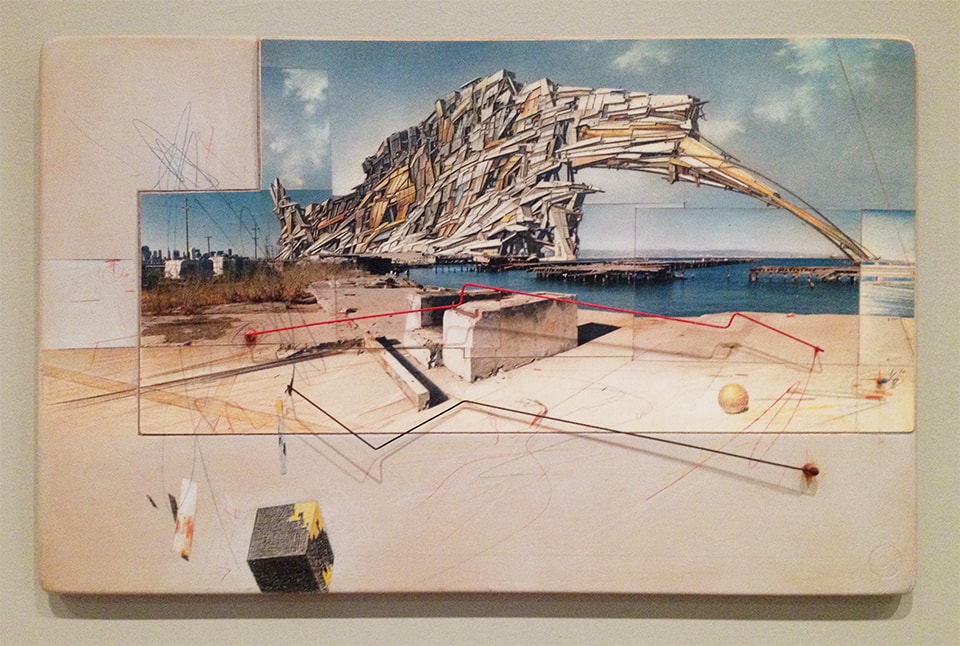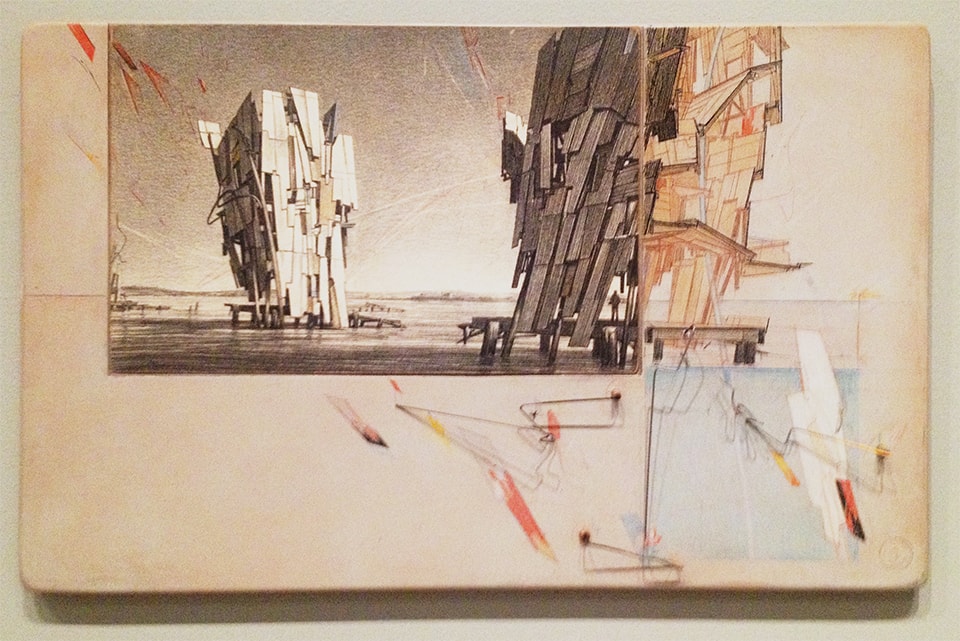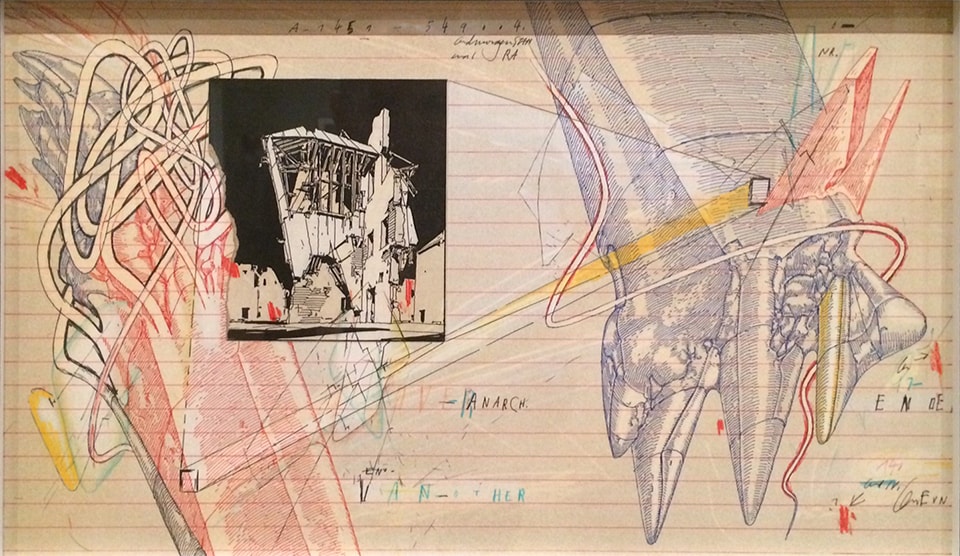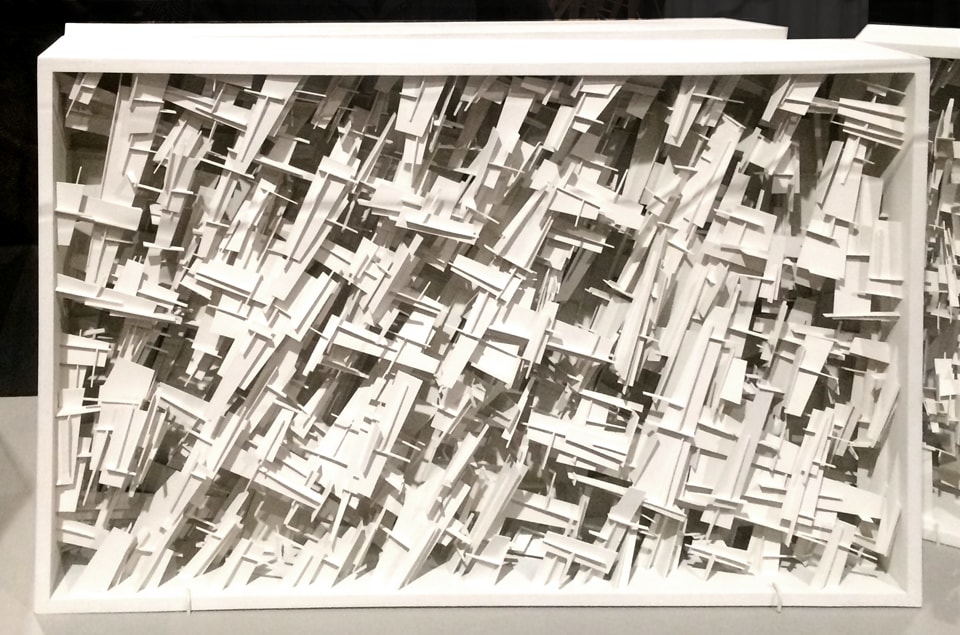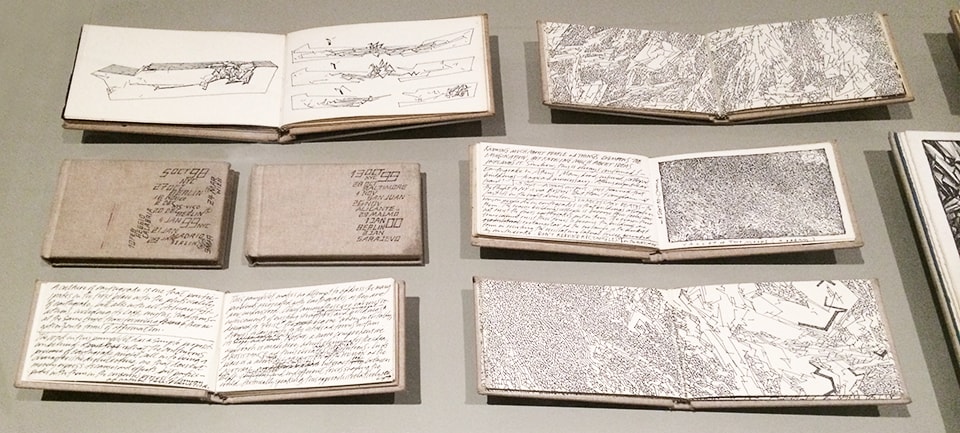Lebbeus Woods, Architect.
April 17, 2014 – June 15, 2004
THE DRAWING CENTER 35 Wooster Street, New York, NY
Lebbeus Woods, Architect, on exhibit at The Drawing Center, traces the career of Lebbeus Woods, a visionary architect whose responses to the sites of trauma have given us haunting designs — intricate, beautiful, full of memory, and ultimately optimistic. The show includes a number of Woods’ projects spanning 40 years of work, from the dynamic tensioned and cantilevered pods of bombed-out Sarajevo, to the “Freespaces” of Berlin during the time of the Wall, to the “ecological utopia” of his Demilitarized Zone in Korea, and to the San Francisco Earthquake houses. Impossibly intricate styrene study models, meticulously annotated sketchbooks, and fragments of writing accompany the powerful drawings in a space that is small yet filled with palpable humanism and love of craft.
While at first glance many of the projects appear futuristic or dystopian, his writing reveals an optimism, compassion, and resilience in the aftermath of trauma. By going to the deep, dark places of war and destruction, Woods tried to understand how to build on and with, these layers of trauma.
The show reveals the work of an architect and urbanist who cared deeply about the memory embedded in the physical apparatus of the city. His work projects a desire to grapple with and make sense of the past, rather than erasing the wounds of war. The work insists that the destruction of war-torn landscapes might create the preconditions of a new, and better, city and society.
Though he did not leave many built projects, Lebbeus Woods’ work and words have left a lasting influence on the many designers for whom he was a teacher, a mentor, a critic and an inspiration. This exhibit at the Drawing Center reminds us of the power of a few well-placed lines on paper.
“Draw. Drawing is the tool of the architect on the move, on the run, the architect who is first of all a citizen of the stricken city and the new, dynamic stability. Pen, pencil, and paper are cheap, accessible. They can be used anywhere, and, if necessary, concealed. Drawings, too, can be easily hidden, or can be exhibited, published, filmed, digitized, and therefore widely disseminated, when the architect is ready to place them in the public domain. Until that time, the architect is freed by drawing’s inherent intimacy to explore the unfamiliar and the forbidden, to break the old rules and invent new ones. Drawings can be made anywhere there is light enough to see. They are instruments of spontaneous experimentation, fluidity of thought, mobility of invention. Unlike models, drawings can describe an immense range of scales with subtlety. And, most of all, drawings are fast. This is important because the architect’s work should not, by virtue of too-arduous labor, become an end in itself. All effort in projection aims at realization in building, and thus in living. This aim cannot be compromised by the fact that not all of the architect’s projections will, can, or should be built.”
Lebbeus Woods, Radical Reconstruction 1997
Lebbeus Woods, Architect closes this weekend at the Drawing Center.
Please go and see it if you can.
“The shift of focus I have made from objects to fields has not been made simply as a rejection of typological thinking, which dominates the design of buildings; nor simply as a rejection of the politics of identity that buildings inevitably work to sustain; nor simply as a rejection of the illusions of authority conjured by buildings – especially innovative buildings designed and built in the service of private or institutional power. It is a shift I have made in order to liberate, in the first case, myself. If I cannot free myself from the reassurance of the habitual, how can I speak of the experimental, which is nothing without real risk even loss? If I cannot free myself from obsession with the end-product, how can I advocate the relations latent in the process of making things? Without freedom from the tyranny of the object, how can I attain the measure of independence necessary to join with others, who, in the making of things, conquer their existence in the first place by their own efforts? If I cannot free myself, how can I advocate the freedom of others, in whichever terms they might choose?”
Lebbeus Woods, 2004
Lebbeus Woods, Architect is curated by Joseph Becker, Assistant Curator of Architecture and Design, and Jennifer Dunlop Fletcher, Helen Hilton Raiser Associate Curator of Architecture and Design, San Francisco Museum of Modern Art. Lebbeus Woods, Architect is organized by the San Francisco Museum of Modern Art and will be open at The Drawing Center through June 15, 2004. More information contact The Drawing Center.
